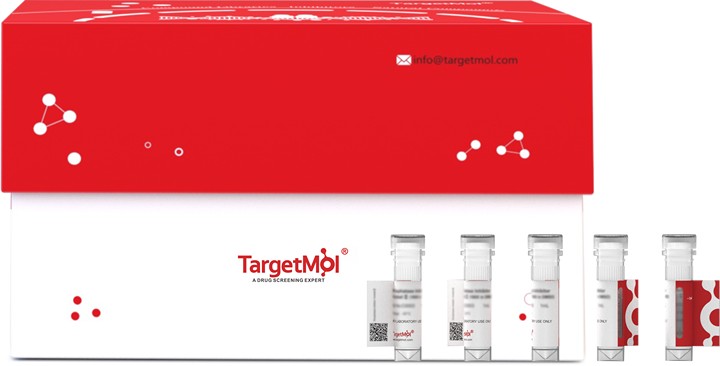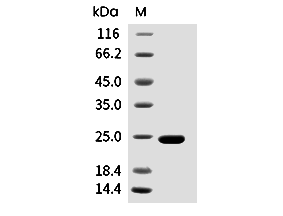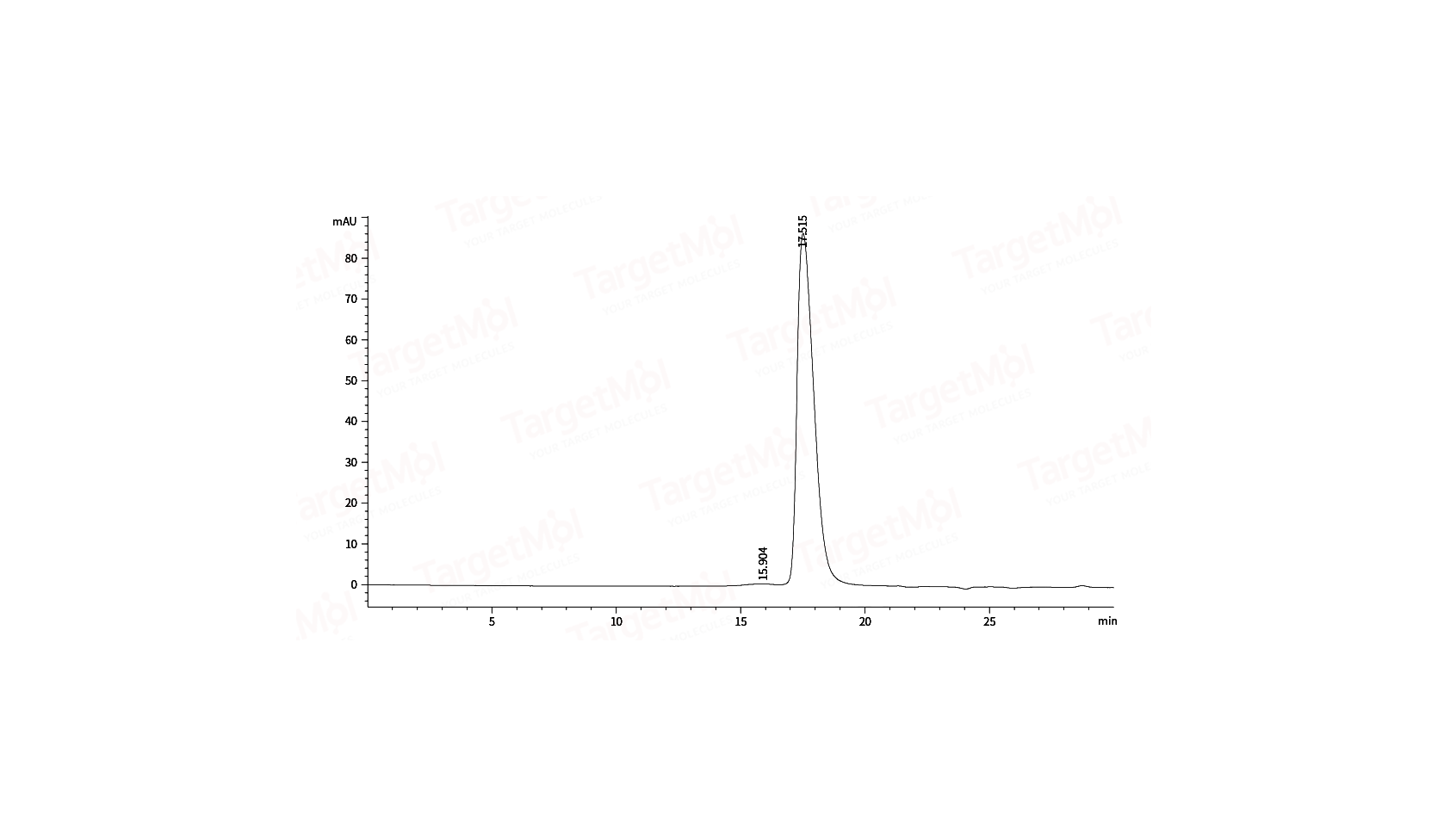 您的购物车当前为空
您的购物车当前为空
FGF-19 Protein, Human, Recombinant
一键复制产品信息FGF19, also known as FGF-19, is a member of the fibroblast growth factor (FGF) family. FGF family members possess broad mitogenic and cell survival activities, and are involved in a variety of biological processes, including embryonic development, cell growth, morphogenesis, tissue repair, tumor growth and invasion. FGF19 interacts with FGFR1, FGFR2, FGFR3 and FGFR4. Affinity between fibroblast growth factors (FGFs) and their receptors is increased by KL, KLB and heparan sulfate glycosaminoglycans that function as coreceptors. It interacts with KL and KLB directly. However, it interacts with FGFR4 in the presence of heparin, KL or KLB. FGF19 is involved in the suppression of bile acid biosynthesis through down-regulation of CYP7A1 expression, following positive regulation of the JNK and ERK1/2 cascades. It also stimulates glucose uptake in adipocytes.

FGF-19 Protein, Human, Recombinant
一键复制产品信息| 规格 | 价格 | 库存 | 数量 |
|---|---|---|---|
| 5 μg | ¥ 693 | 3日内发货 | |
| 10 μg | ¥ 1,130 | 3日内发货 | |
| 20 μg | ¥ 1,880 | 3日内发货 | |
| 50 μg | ¥ 3,800 | 现货 | |
| 100 μg | ¥ 6,660 | 5日内发货 | |
| 200 μg | ¥ 11,700 | 5日内发货 | |
| 500 μg | ¥ 24,700 | 5日内发货 | |
| 1 mg | ¥ 43,700 | 5日内发货 |
产品信息
| 生物活性 | Activity testing is in progress. It is theoretically active, but we cannot guarantee it. If you require protein activity, we recommend choosing the eukaryotic expression version first. |
| 产品描述 | FGF19, also known as FGF-19, is a member of the fibroblast growth factor (FGF) family. FGF family members possess broad mitogenic and cell survival activities, and are involved in a variety of biological processes, including embryonic development, cell growth, morphogenesis, tissue repair, tumor growth and invasion. FGF19 interacts with FGFR1, FGFR2, FGFR3 and FGFR4. Affinity between fibroblast growth factors (FGFs) and their receptors is increased by KL, KLB and heparan sulfate glycosaminoglycans that function as coreceptors. It interacts with KL and KLB directly. However, it interacts with FGFR4 in the presence of heparin, KL or KLB. FGF19 is involved in the suppression of bile acid biosynthesis through down-regulation of CYP7A1 expression, following positive regulation of the JNK and ERK1/2 cascades. It also stimulates glucose uptake in adipocytes. |
| 种属 | Human |
| 表达系统 | E. coli |
| 标签 | Tag Free |
| 蛋白编号 | O95750-1 |
| 别名 | fibroblast growth factor 19,FGF19 |
| 蛋白构建 | A DNA sequence encoding the mature form of human FGF19 (O95750-1) (Phe27-Lys216) was expressed with a N-terminal Met. Predicted N terminal: Met |
| 蛋白纯度 | ≥ 95 % as determined by SDS-PAGE. ≥ 95 % as determined by SEC-HPLC.   |
| 分子量 | 21.4 kDa (predicted); 23 kDa (reducing conditions) |
| 内毒素 | < 10 EU/mg of the protein. |
| 蛋白性状 | Lyophilized powder |
| 缓冲液 | Lyophilized from a solution filtered through a 0.22 μm filter, containing PBS, pH 7.4. Typically, a mixture containing 5% to 8% trehalose, mannitol, and 0.01% Tween 80 is incorporated as a protective agent before lyophilization. |
| 复溶方法 | A Certificate of Analysis (CoA) containing reconstitution instructions is included with the products. Please refer to the CoA for detailed information. |
| 存储 | It is recommended to store recombinant proteins at -20°C to -80°C for future use. Lyophilized powders can be stably stored for over 12 months, while liquid products can be stored for 6-12 months at -80°C. For reconstituted protein solutions, the solution can be stored at -20°C to -80°C for at least 3 months. Please avoid multiple freeze-thaw cycles and store products in aliquots. |
| 运输方式 | In general, Lyophilized powders are shipping with blue ice. |
| 研究背景 | FGF19, also known as FGF-19, is a member of the fibroblast growth factor (FGF) family. FGF family members possess broad mitogenic and cell survival activities, and are involved in a variety of biological processes, including embryonic development, cell growth, morphogenesis, tissue repair, tumor growth and invasion. FGF19 interacts with FGFR1, FGFR2, FGFR3 and FGFR4. Affinity between fibroblast growth factors (FGFs) and their receptors is increased by KL, KLB and heparan sulfate glycosaminoglycans that function as coreceptors. It interacts with KL and KLB directly. However, it interacts with FGFR4 in the presence of heparin, KL or KLB. FGF19 is involved in the suppression of bile acid biosynthesis through down-regulation of CYP7A1 expression, following positive regulation of the JNK and ERK1/2 cascades. It also stimulates glucose uptake in adipocytes. |





 |
|